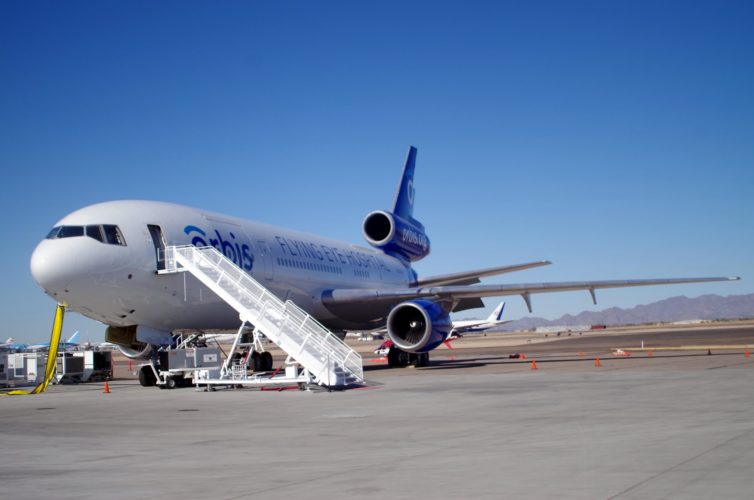
A ground crew member’s view of the Orbis Flying Eye Hospital. – Photo: Justin Schmid | AirlineReporter
Part of what fascinates me when I visit an airport is wondering where the aircraft have been. Look up a tail number for any commercial aircraft, on a site like FlightRadar24, and you’ll find a long list of destinations. For widebody aircraft, those destinations get noticeably more far-flung. While many aircraft have a rich history, few have made an impact like the MD-10 known as N330AU – also known as the Orbis Flying Eye Hospital. This is not just any ‘ol commercial or cargo aircraft, it provides some very special services.
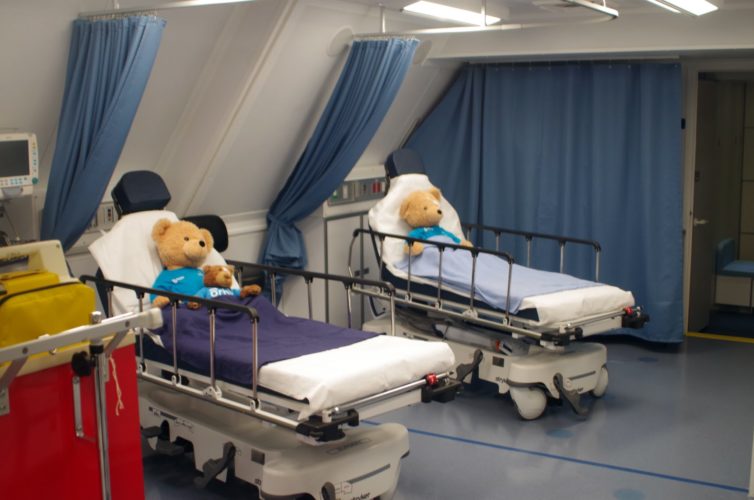
The inside of the Orbis Eye Hospital is “bearly” recognizable as an MD-11. – Photo: Justin Schmid | AirlineReporter
Val Suberg, Orbis’ senior manager of aircraft maintenance, can prove that point with just one story about two sisters from Ethiopia. They were blind as a result of pediatric cataracts, which would be a simple surgery in many countries. The sisters, though, had traveled to Addis Ababa and found out that the hospital there only served adults. A member of the hospital staff told them that the Orbis Flying Eye Hospital would arrive in a few weeks, and that they could treat the sisters. They waited in Addis Ababa and were selected for surgery. They got to see each other for the first time, and were eventually able to attend college. Now that is a special plane, with some VIP crew!
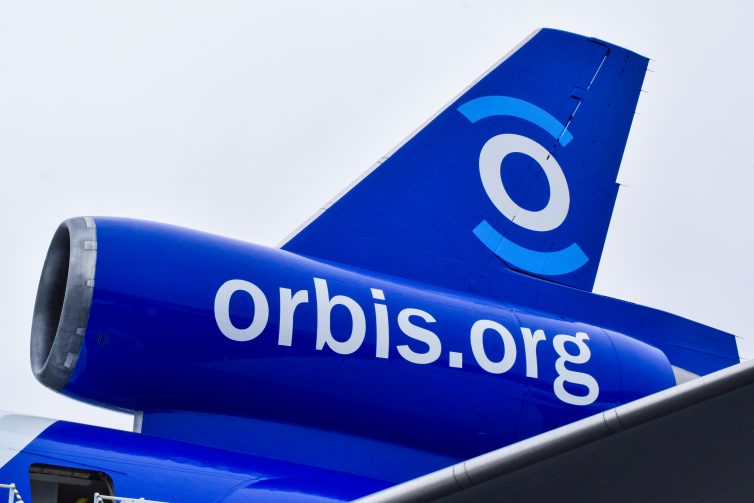
Engine No. 2/vertical stabilizer (“the tail”) of the Orbis MD-10-30F Flying Eye Hospital (N330AU) – Photo: John Nguyen | AirlineReporter
On June 2, Orbis International launched their new, third-generation “Flying Eye Hospital” on board a converted MD-10-30F donated by FedEx. Orbis is a non-profit non-governmental organization (NGO) that aims to provide advanced eye care and medical training to communities throughout the world without access to such facilities, technology, and expertise… literally bringing the hospital to patients and caregivers who need it the most.
I was invited aboard for a special private tour to see this mobile hospital for myself and learn about more its history, design, and purpose, and I created a short video slideshow of highlights…
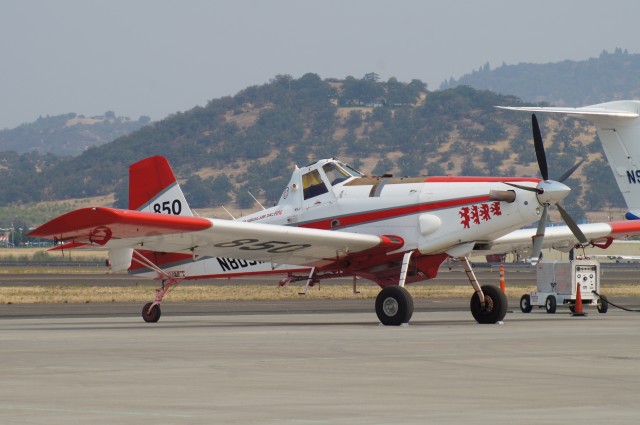
An AT-802F Air Tractor (check out the “fire words” on the nose) – Photo: Julian Cordle
Last November, I brought you an initial introduction into the world of Aerial Firefighting. That article focused on the concept, tactics and state of aerial firefighting. I promised a second look at the aircraft of Aerial Firefighting, so here we go!
First, let’s review the types of fixed-wing aerial firefighting aircraft and the associated designations and acronyms.
SEATs (Single Engine Air Tankers) are short-range, small, one-person aircraft with less than approximately 1,000 gallons of usable retardant capacity. The most well-known example here is an AT-802F Air Tractor and the ’œFire Boss’, which is a model AT-802F fitted with floats.
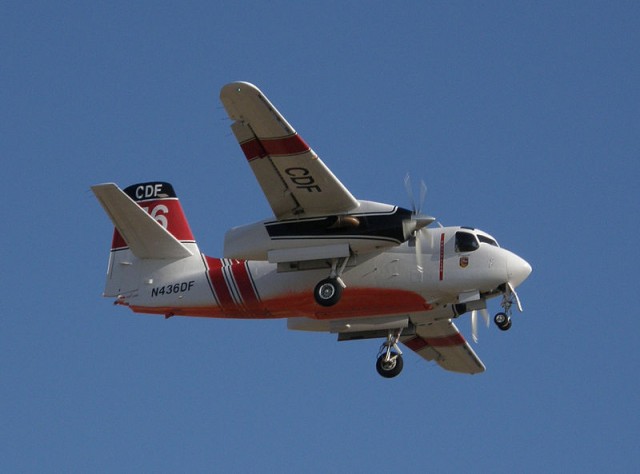
A Grumman S-2T converted to fire fighting duty – Photo: Alan Radecki | WikiCommons
Next we have the Large Air Tankers (LATs): of Type III, II, and I. Type III air tankers can dispense approximately 1,200 gallons per drop. The best example in this class could be the Grumman S-2T, which are re-engined Grumman S-2 ’œTracker’ Navy patrol aircraft. CalFire currently has 20+ of these in service.
Type II tankers include such interesting aircraft as the purpose-built Canadair CL-215 ’œSuperScooper’, with high, oversized wings and v-hull for scooping up up to 1,250 gallons of water to deliver to a fire.
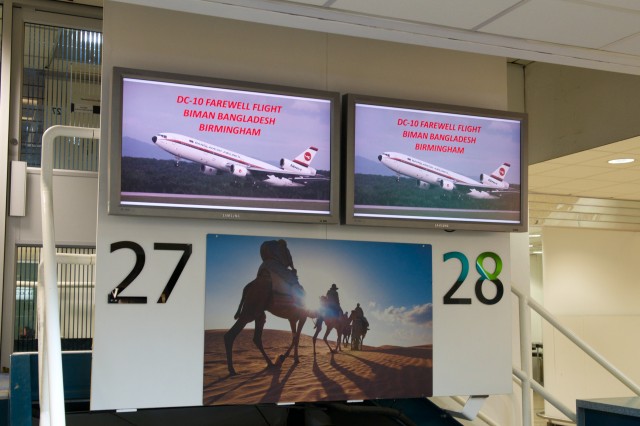
Checking in for a very special flight – Photo: Bernie Leighton | AirlineReporter
This is the final part of a three-part series documenting the DC-1o’s final passenger flights. Click here for Part 1 (flying from Dhaka to Kuwait City) or click here for Part 2 (flying from Kuwait to Birmingham).
I felt lucky, but also as if I had spent the better part of the last few days being beaten by 2x4s. I was able to fly on the last schedule passenger flight for the DC-10, the creator of my dismay (that much time with air that dry had some long-lasting affect). If that wasn’t enough I was going to fly on the very last, and I mean the absolute final DC-10-30 passenger flight . My flight wouldn’t be long, but it would be adventurous. I had already put in quite a bit of time with this DC-10 and was ready for another level of AvGeek adventure.
Check in was brisk. I was actually in the terminal a little early anyway to meet my friends and try to sort out a ticketing matter with Delta (it didn’t work; I had to wake up early the next day to fix it) so I thought after one failure, I may as well go for a win.
My boarding pass was issued promptly, seat 33A. There were no bags to check, obviously – I was just going up to Scotland, than back down to BHX.
I made my way up to the makeshift Biman store to purchase some safety cards. Whilst there, it became clear that this last flight was going out with quite a fanfare.
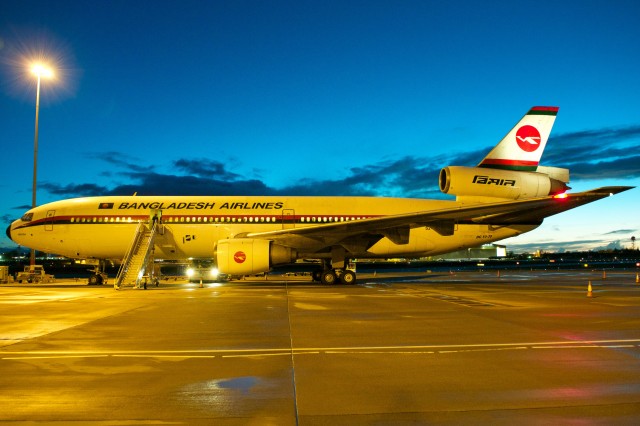
S2-ACR in the darkness of Birmingham after arriving late from Kuwait City – Photo: Bernie Leighton | AirlineReporter
This is the second part of a three-part series documenting the DC-1o’s final passenger flights. Click here for Part 1 (flying from Dhaka to Kuwait City).
Flying on the first leg to Kuwait on our way to Birmingham on the last DC-10 passengers flight was surreal, yet exciting. Landing in Kuwait seemed like a good almost-final stop for the DC-10, since I love old airliners landing in interesting places.
I have to say that ground handling in Kuwait was less than ideal. First, we had to hold on a taxiway just to the south of the main terminal for approximately twenty minutes. Then, we had to taxi to a hardstand adjacent some private jets. Kuwait Airport is the first I’ve have seen that actually offers fixed sunshades to keep your VIP aircraft from melting under the relentless Arabian Gulf sun.
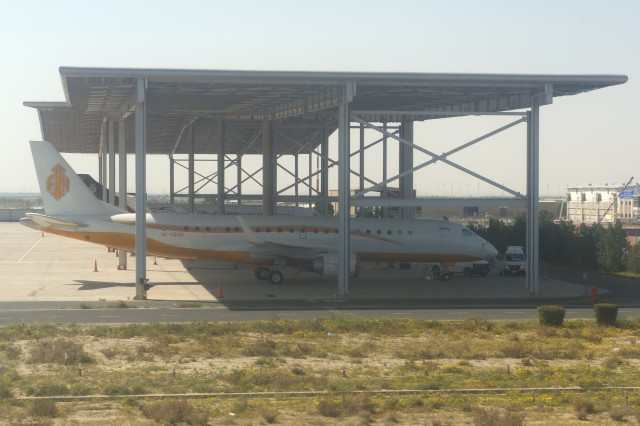
An example of the executive jet verandas at Kuwait International Airport – Photo: Bernie Leighton |AirlineReporter
Finally, the engines were shut down and a ground services truck appeared. Since the flight was double-catered out of Bangladesh, it was merely the aircraft groomers.
These were groomers who had no idea how many lavs there were on a DC-10-30, or where the galleys all were. It was at this time I also learned that, while there was no in-seat power, there were a couple of power points located around the aircraft. I almost tripped over someone’s battery charger in the number four lav!







